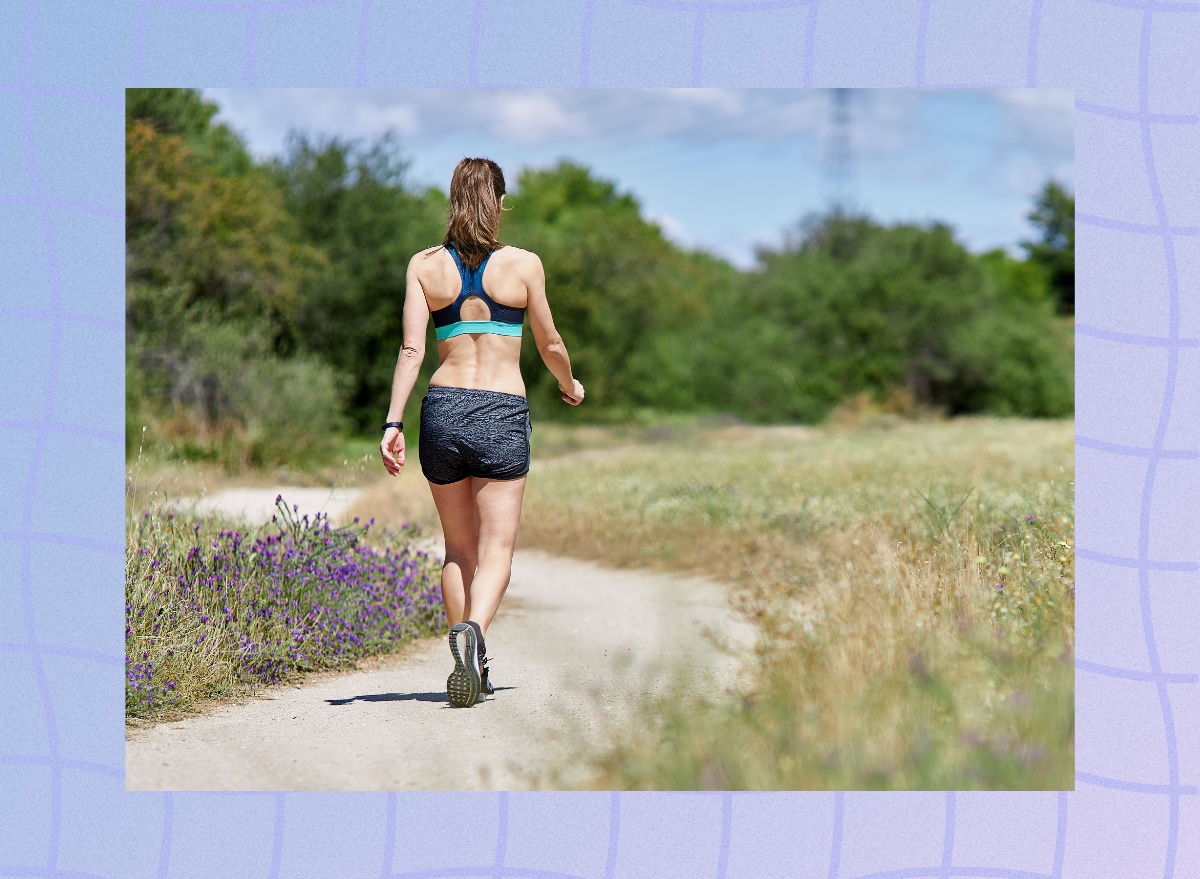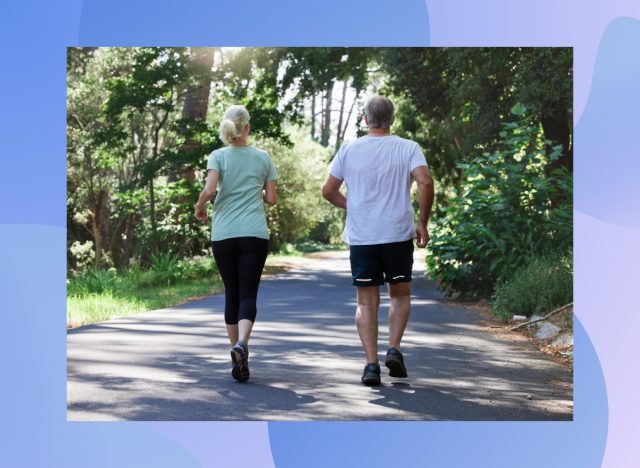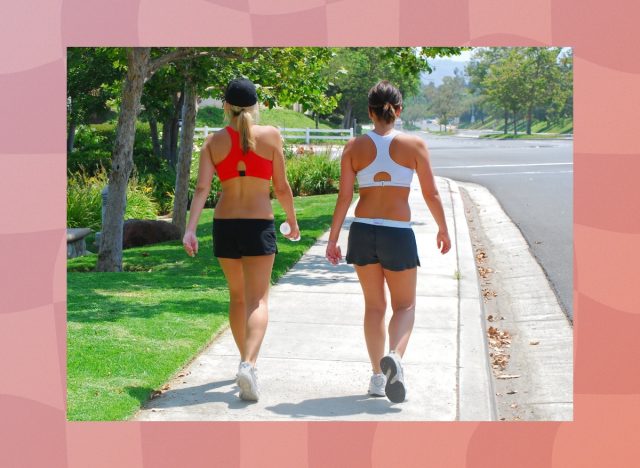One Incredible Trick for Burning More Fat While Walking, Says Study

In case you haven't heard, walking more every day is an excellent way to stay active, burn plenty of calories, and ultimately lead a healthier, longer, and more fruitful life. But, like all forms of fitness—whether you're lifting weights, performing HIIT, or doing long-distance forms of cardio—there are always little tricks you can use to make it even more effective.
According to a new study conducted by researchers at Tokyo's Waseda University, and published in the Journal of Physical Therapy Science, there's one totally surprising way to increase your calorie burn while walking—and no, it's not a no-brainer such as "walk faster" or "stop and do some squats along the way." (Which, to be clear, are both great.)
Curious to know how to get even more out of your daily strolls? Read on for what the scientists discovered, which may actually blow your mind. And if you love nothing more than to walk, make sure you're aware of The Secret Cult Walking Shoe That Walkers Everywhere Are Totally Obsessed With.
All It Takes Is a Stick of Chewing Gum

Fact: One of the great functions of intense exercise is that you're pushing your heart rate above its usual resting rate for a prolonged period of time. When the heart beat elevates during exercise, more oxygen and blood is pumped to our muscles, and the heart itself is essentially treated to its own mini "workout," consequently improving overall cardiovascular health. Now, normally one has to jog—or, at least walk at a brisk pace—to get their heart rate jumping.
The new study says that there's yet another option.
Incredibly, the study authors report that simply chewing some gum while going for a walk is enough to both elevate heart rate and increase energy expenditure (calories burned). While this actually isn't the first research project to find that chewing gum can increase heart rate while at rest, it is the first to investigate its impact while out for a walk.
A total of 46 men and women with a wide variety of ages (21-69 years old) took part in this study. Every single participant showed a significantly higher average heart rate while walking with gum in comparison to walking without gum, as well as a greater difference between resting and active heart rate. A faster heart rate means more fat burned.
Moreover, a portion of participants also saw their walking speed, distance traveled, and step count increase while chewing gum in comparison to when they walked without some gum. "Combining exercise and gum chewing may be an effective way to manage weight," study authors comment. For more on the benefits of walking, don't miss the Incredible Things That Happen When You Walk More, Says Science.
Older Men Reaped the Biggest Rewards

The findings indicate that chewing gum while walking is beneficial for anyone at any age, but researchers note that older male participants in the study enjoyed the biggest health perks after adding some gum to their daily routine.
When participants were separated by gender and age, researchers discovered that men specifically enjoyed extra benefits: Big upticks in distance walked and average walking speed in comparison to without gum. Additionally, both male and female middle-aged and older subjects (ages 40 and up) showed an even higher average heart rate while walking and chewing gum in comparison to younger participants. So, in light of both of those findings, study authors conclude that chewing gum while walking appears to offer the most benefits to older men.
"Chewing gum while walking affects a number of physical and physiological functions in men and women of all ages. Our study also indicates that gum chewing while walking increased the walking distance and energy expenditure of middle-aged and elderly male participants in particular," researchers explain. And for more great walking tips, don't miss The One Type of Walking You're Not Doing Enough Of, Says Science.
The Experiment

In the study, each participant was asked to go for a 15-minute walk after a one-hour rest period on two distinct occasions. First, participants went for a walk at their natural pace after being given two pieces of gum to chew (containing three calories each). Then, everyone went for the same walk (15 mins, preceded by an hour of rest) after being given a powder to swallow containing the same ingredients as the gum used in part one. The second walk after ingesting powder served as the control trial. As participants walked across both trials, study authors kept close track of heart rate, distance covered, walking speed, step count, and energy expenditure.
One Possible Explanation

This study was never intended to answer the question of why chewing gum adds so much more to a leisurely stroll. That being said, study authors speculate that this attractive benefit is likely connected to cardio-locomotor synchronization, which refers to the heart's tendency to beat in pattern with other repetitive movements. In this case, the repetitive action is chewing gum. And if losing weight is your goal, don't miss The Secret to Walking Your Way to a Lean Body, Say Experts.








